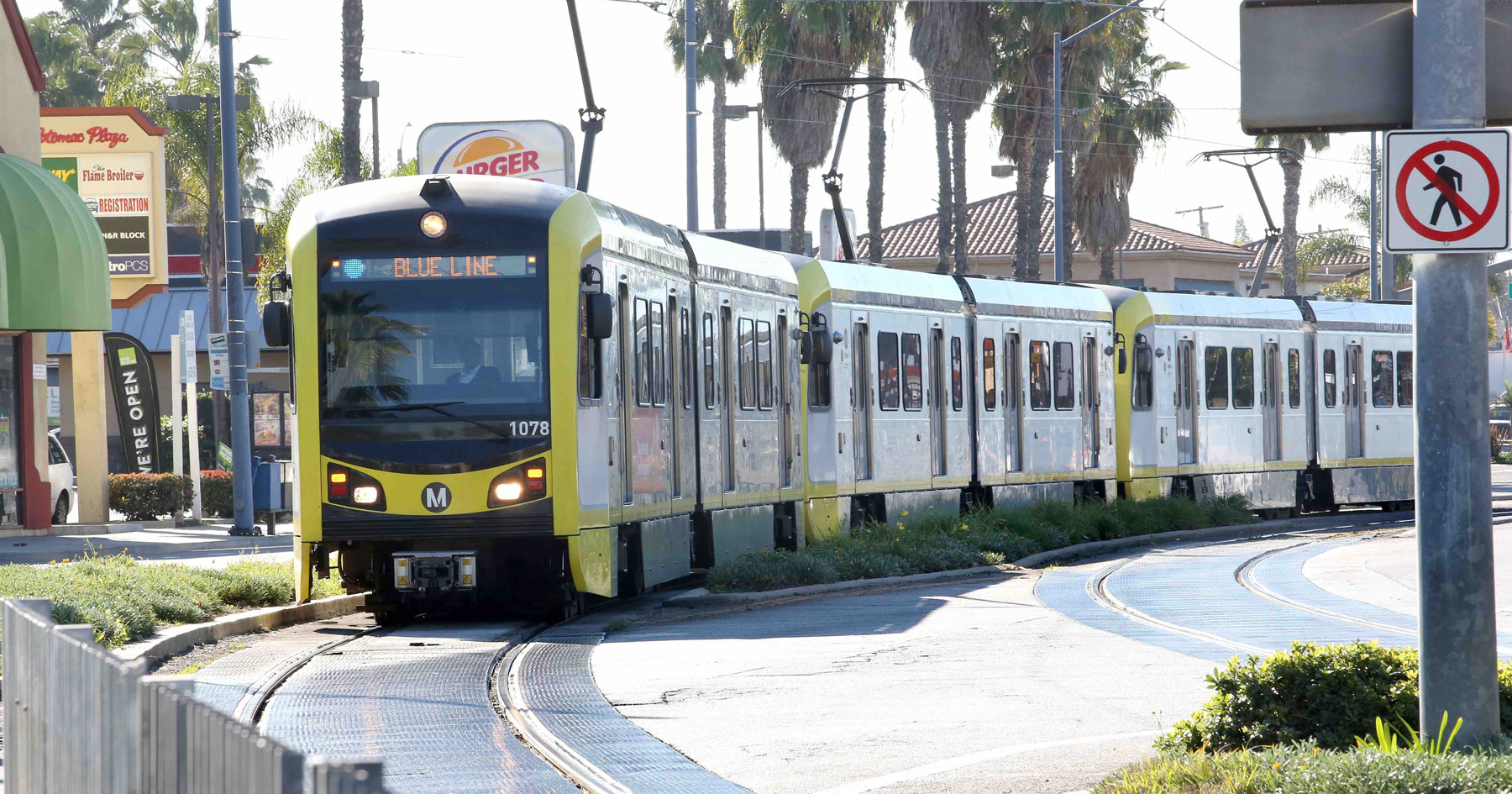
Delivering a passenger-centric modernization
How LA Metro puts ridership first when updating its system
By Tim Lindholm and James Wei | Los Angeles County Metropolitan Transportation Authority
Transit system modernizations deliver many long-lasting benefits, including greater safety, mobility, accessibility and economic development. At Los Angeles Metropolitan County Transportation Authority (Metro), we view modernizations as an opportunity to reimagine how our ridership experiences the system — from signage to station layout.
Our A Line is a 48.5-mile northeast-southwest light rail alignment between Azusa and Long Beach via downtown Los Angeles. Under a $600 million modernization, we worked to modernize the original 22-mile alignment between Long Beach and downtown Los Angeles that was built in 1990. The project replaced the existing track, refreshed the stations, installed new crossovers, overhauled overhead catenary systems, enhanced at-grade crossings and upgraded train control and signaling to modern standards – all while ensuring 70,000 weekday passengers continued to receive the best service possible.
We employed the following passenger-centric strategies during system modernizations to minimize service disruptions and deliver maximum outcomes as quickly as possible:
1. Provide as good or better service during construction
While modernizations emphasize change and renewal, the commitment to provide the best passenger service possible should remain a constant – even during a closure.
If we cannot deliver our passengers to their destinations by the normal transit mode because of a line closure, we find an alternative. In the case of our recent A Line modernization, we executed the most extensive bus bridging program in Metro history, requiring hundreds of additional buses, bus operators and a network of temporary bus routes. We provided three levels of temporary bus service, one Express Route with direct non-stop service from Downtown Los Angeles to Long Beach, a limited stop express service between the closed and active portions of the line (LA to Watts or Watts to Long Beach) as well as a train emulating bus service that stopped at every closed station.
LA surface streets worked in our favor. Large, arterial roads parallel to the A Line allowed buses to mimic the existing light rail route. In addition, we introduced express bus service from downtown Long Beach to midline and then midline to downtown LA. Although it was complex to plan and deploy, the temporary option of express bus service helped Metro gain customer support for the closure and confidence that their transportation needs would continue to be met.
2. Make improvements passengers can see and appreciate
Because riders cannot see many of the system improvements made during a modernization, we make a point to facelift stations with fresh paint, new digital signage, brighter lighting, landscaping, artwork, maintenance and furniture. Clean, attractive and welcoming stations are tangible signs of Metro’s progress, and our investments make passengers feel served and valued.
During the A Line’s shutdown, we also took the opportunity to advance our rebranding initiative by installing new signage and wayfinding devices to reflect the transformation from the station’s previous name- the Blue Line- to the A Line.
3. Increase accessibility and inclusivity
When planning a modernization, we seek ways to increase access to our system. For example, during the modernization we reimagined how customers might reach the A Line’s Willowbrook/Rosa Parks Station. The result is a new pedestrian crossing at the south end of the station platform connects to the bus plaza. Walkways, a new pick-up/drop-off area, an expanded park-and-ride, a new Metro Customer Service Center and a new Metro Bike Hub narrow the first-mile last-mile gap and extend the opportunity for transit ridership to a broader audience.
4. Create faster, more reliable service
Metro wants to be the premier mobility provider in Southern California, and the only way we will achieve our vision is with fast, reliable service. During a modernization program, we may upgrade train control, install new interlockings, add new sidings and fine-tune signal timing on the street-running portions of the line. On the A Line, these collective improvements cut five minutes off trip times.
Further, to increase passenger safety, we increased battery backup capacity on our trains so lights and communication systems can continue functioning during power outages.
5. Spark revitalization in passengers’ communities
Metro projects strive to benefit everyone – even those who don’t use our system. We purposely plan our system improvements to spark economic transformation in the communities we serve. Downtown Long Beach and downtown LA are experiencing massive transit-oriented development near Metro stations with affordable senior housing, a medical center, a high school and a private university sprouting up around the Willowbrook/Rosa Parks Station.
6. Ensuring capacity during the Olympic Games
In 2028, Los Angeles will host the Summer Olympics, and area leaders have declared the games to be car-free. LA Metro will be a key transportation provider during the event. Our system improvements and modernization programs, including the recently completed K Line, focus on increasing capacity to ensure our regular passengers can rely on us to connect them to their destinations seamlessly and reliably, even as we serve the millions of tourists and athletes who will visit our city.
Putting the Passenger First, Maximizing Results
By enlisting these strategies, transit owners can execute passenger-centric programs while bringing their systems into a state of good repair. We can minimize future maintenance and service disruptions, increase trip reliability, spark revitalization and provide seamless transportation on the world stage – all while ensuring our passengers receive the best service possible.
ABOUT THE AUTHORS
 Tim Lindholm
Tim Lindholm
Deputy Chief Program Management Officer
Los Angeles County Metropolitan Transportation Authority
Tim Lindholm is the deputy chief program management officer for LACMTA, and has more than twenty years of experience overseeing the design and development of transportation infrastructure in our country’s most populous county. He is responsible for a staff of 40 employees executing a $9 billion capital program for Metro’s rail, bus highway, and active transportation projects.
In addition to managing the program, Mr. Lindholm is focused on pivoting Metro towards alternative project delivery methods, including the I-105 ExpressLanes and East San Fernando Valley Light Rail projects. His team is also delivering the new Metro/LAX Transit Center, an ambitious project that will finally connect our Metro system to LAX by the end of 2024. A native of Southern California, Mr. Lindholm is a graduate of San Diego State University and a State of California Professional Geologist.
 James Wei
James Wei
Deputy Executive Officer, Project Management
Los Angeles County Metropolitan Transportation Authority
James Wei is the deputy executive officer, project management for LACMTA. Wei oversees the Metro Express Lanes Program as well as the Metro C-Line Station Enhancement Project.
